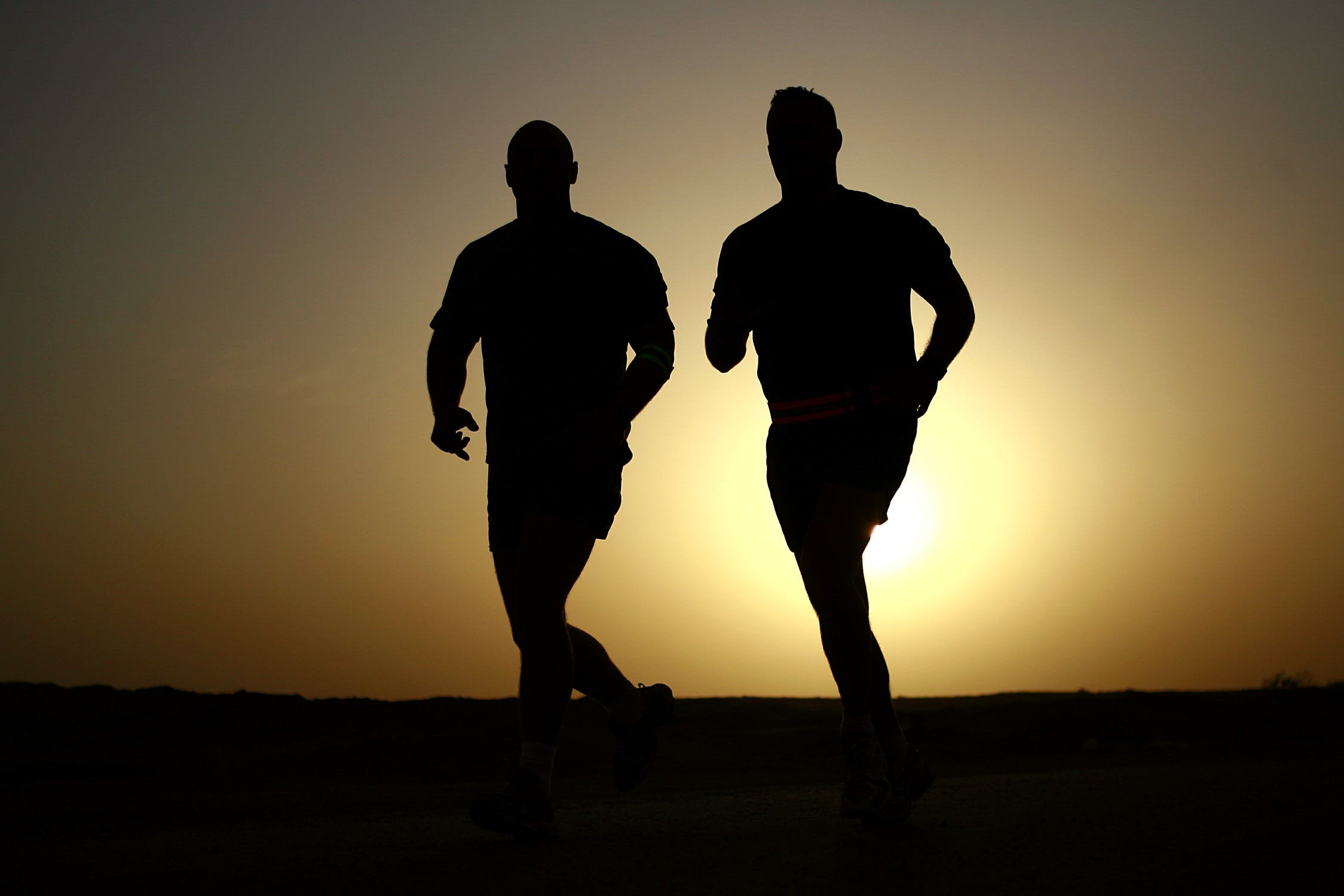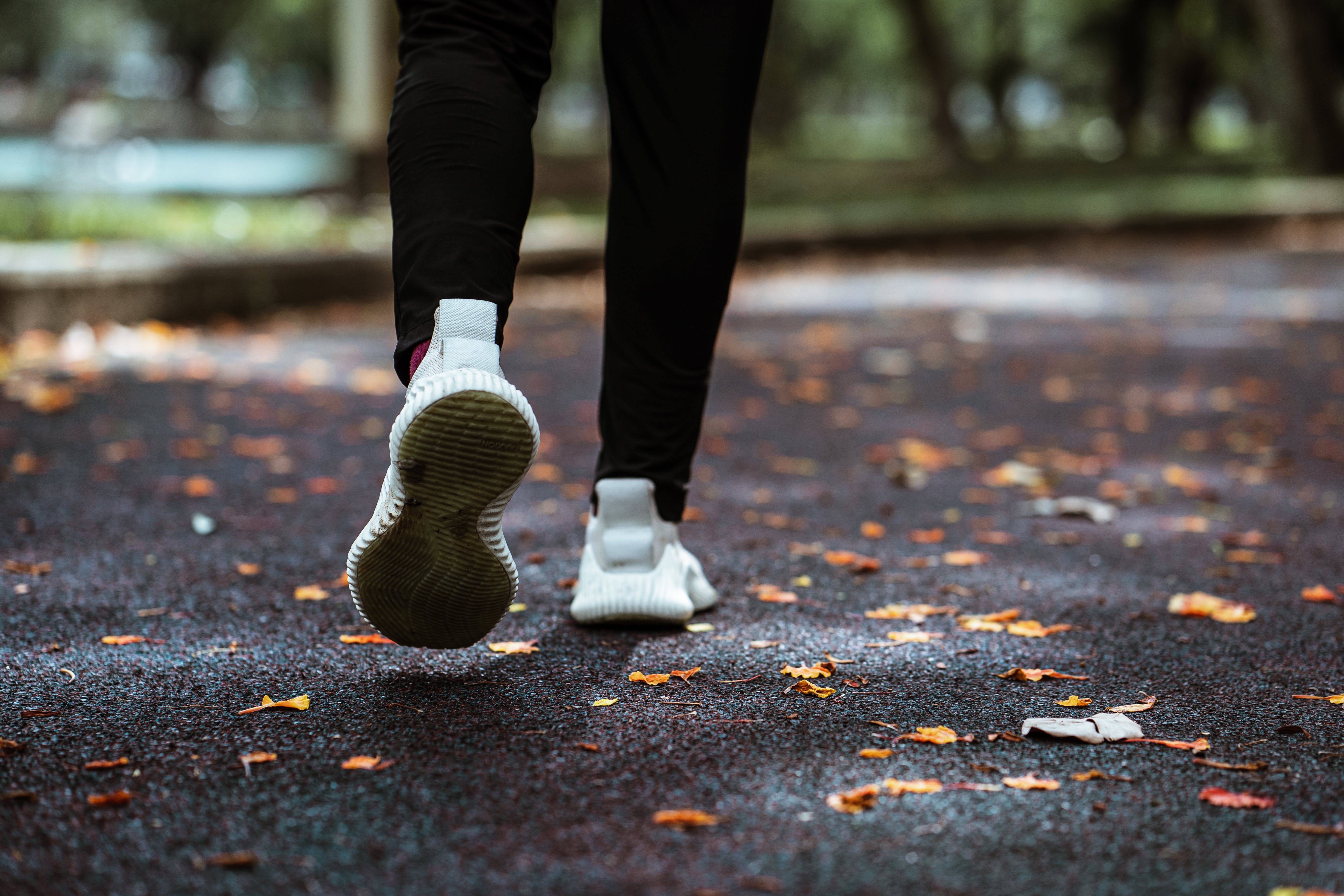Embarking on a journey to eliminate belly fat can be both exhilarating and challenging. Running, known for its high-calorie burn and cardiovascular benefits, is a prime choice for those aiming to reduce their waistline. The best running workout to lose belly fat isn’t just a single routine; it’s a strategic approach that combines intensity, consistency, and variety to achieve optimum results. As we lace up our sneakers, we recognize that every stride takes us closer to our goal of a healthier, more toned physique.
At Run Just For Fun, we understand that the beginning is often the hardest part. That’s why we provide you with expert guidance and support, ensuring your running regime is not just effective but also sustainable and enjoyable. With each step, you’re not just shedding pounds; you’re embarking on a transformative experience that empowers you to push your limits and discover the joy of movement. Visit our website to learn more and get started today! Click here.
Whether you’re a seasoned runner looking to target belly fat or a beginner taking your first jogging steps, our tailored workouts are designed to help you conquer this common trouble spot. Cardiovascular exercise, like running, is scientifically proven to aid in visceral fat loss, which is the harmful fat surrounding your internal organs. By incorporating running into your fitness routine, you’re setting the stage for a stronger, slimmer, and healthier body.
Understanding Belly Fat and Running Efficacy

Belly fat, also known as visceral fat, is more than just a nuisance that makes your clothes feel tight. This type of fat is a significant health concern, as it’s linked to numerous diseases such as type 2 diabetes, heart disease, and certain cancers. Understanding how belly fat differs from other types of body fat is crucial for effective weight management. Running is particularly effective in combating visceral fat because it helps lower insulin levels, improve blood sugar control, and reduce inflammation, all of which are factors in fat accumulation around the midsection.
Scientific research has consistently shown that aerobic exercises, like running, are one of the most efficient methods for burning calories quickly and improving overall health. The efficacy of running in targeting belly fat lies in its ability to create a calorie deficit, whereby the body burns more calories than it consumes, thus forcing the body to tap into fat reserves for energy. High-Intensity Interval Training (HIIT) running workouts, which alternate between bursts of intense activity and periods of rest or lower intensity, are particularly effective for burning visceral fat even after the workout is over, thanks to the increased metabolic rate.
Moreover, running helps to build lean muscle, which in turn boosts basal metabolic rate (BMR), meaning your body burns more calories at rest. A higher BMR equates to greater calorie expenditure throughout the day, contributing to the reduction of belly fat. It’s important to remember that while running is a powerful tool in the fight against belly fat, a holistic approach that includes a balanced diet and strength training is essential for the best running workout to lose belly fat.
Crafting the Ultimate Belly Fat-Burning Running Routine

To craft the best running workout to lose belly fat, one must blend variety, intensity, and consistency. A routine that encompasses these elements can significantly enhance the belly fat burning process. Begin with a warm-up to prepare your body for the workout ahead. This could include dynamic stretches or a brisk walk, gradually increasing to a light jog to get your heart rate up and muscles ready for action.
Once warmed up, transition into the core of your running routine. For maximum belly fat burning, incorporate intervals of high-intensity runs with periods of moderate jogging or walking. For example, you could sprint for 30 seconds followed by a 1-minute jog, repeating this cycle for a total of 15 to 20 minutes. This type of interval training, known as HIIT, has been shown to be exceptionally effective at not only burning calories during the workout but also for hours afterwards due to a phenomenon known as the afterburn effect.
Endurance runs should also be part of your weekly routine. Aim for a longer run at a steady, moderate pace once or twice a week to build stamina and increase caloric burn. These runs help improve cardiovascular health and further contribute to fat loss, including that stubborn belly fat. It’s also beneficial to integrate hill runs or incline treadmill sessions, as they require more energy and can accelerate the fat-burning process.
Remember to cool down after each session with a slow jog or walk, followed by stretches to aid recovery and reduce the risk of injury. Consistency is key; aim to follow this tailored running routine at least three times a week, increasing the duration and intensity as your fitness improves. Keep in mind that variation in your workouts will not only keep you motivated but also challenge your body to continue burning belly fat efficiently.
Incorporating Interval Training for Enhanced Fat Loss
Interval training is a powerhouse when it comes to enhancing fat loss, particularly around the midsection. This technique alternates between bursts of high-intensity work and periods of low-intensity recovery, creating a metabolic environment conducive to burning fat. To incorporate interval training into your running routine, start with shorter high-intensity intervals, such as 30 seconds of sprinting followed by 1 to 2 minutes of walking or jogging for recovery.
As your fitness level advances, you can increase the duration and intensity of the high-intensity phases, aiming for up to a minute or longer. A typical interval training session might include a 5 to 10-minute warm-up, followed by several rounds of high-intensity and recovery intervals, and concluding with a cool-down period. The total workout can range from 20 to 30 minutes but is incredibly effective for stimulating fat loss due to the increased heart rate and calorie burn.
Studies have shown that interval training can elevate your metabolism for hours after the workout has finished, a phenomenon known as excess post-exercise oxygen consumption (EPOC). This effect means that you’ll continue to burn more calories after your session, even at rest. To keep your interval training effective, vary your workouts by changing up the length of the intervals, the intensity of the sprints, and the recovery time. This not only helps prevent fitness plateaus but also keeps your workouts exciting and challenging.
For those new to interval training, it’s important to listen to your body and start at an appropriate level of intensity. Over time, as your endurance and strength improve, you can push yourself with longer and more frequent high-intensity intervals. Remember, consistency is crucial for long-term success, so make interval training a regular part of your running regimen to maximize belly fat loss.
Nutrition and Hydration for Optimizing Running Workouts

Nutrition and hydration are the unsung heroes in optimizing your running workouts and achieving your belly fat loss goals. The foods you eat can either fuel your runs effectively or weigh you down, so it’s essential to focus on a balanced diet rich in whole foods, lean proteins, whole grains, and plenty of fruits and vegetables. These nutrients provide the energy necessary for your body to perform and recover from the best running workouts to lose belly fat.
Before a run, aim to eat a light meal or snack that includes carbohydrates and a moderate amount of protein; this will give you a sustained energy release. Foods like a banana with almond butter or a small serving of Greek yogurt with berries are excellent pre-run choices. Post-run, focus on recovery with meals that combine protein and carbohydrates to rebuild muscle and replenish glycogen stores. A chicken and quinoa salad or a smoothie with protein powder and fruit can support recovery and aid in fat loss.
Hydration is equally important, especially for runners who are working out to lose belly fat. Dehydration can lead to decreased performance and increased fatigue, which can sabotage your workouts. Make sure to drink plenty of water throughout the day, not just during and after your runs. A general guideline is to drink at least half your body weight in ounces of water daily, adjusting for intense exercise and hot weather.
For those longer runs or workouts in hot conditions, consider an electrolyte replacement drink to maintain the balance of fluids and electrolytes in your body. Just be cautious of the sugar content in many sports drinks; opt for those with lower sugar or make your own natural electrolyte drink using a mix of water, lemon juice, a pinch of salt, and a touch of honey.
By paying attention to both nutrition and hydration, you can optimize your running workouts for maximum fat burning and overall health. Balancing these elements will help you perform at your best and see the results you’re after more quickly and effectively.
Monitoring Progress and Adjusting Your Running Plan

Visit our website to learn more and get started today! Click here.
Monitoring your progress is a crucial step in the journey of losing belly fat through running. Keeping track of your workouts not only motivates you but also provides valuable data to help you adjust your running plan for better results. Utilize a running app or a traditional workout log to record details such as distance, pace, and how you felt during each run. Over time, this data will reveal patterns and improvements, allowing you to celebrate milestones and identify areas for enhancement.
It’s also important to listen to your body and be flexible with your running workouts. If you’re feeling fatigued or experiencing pain, it may be time to take a rest day or revisit your running frequency and intensity. Additionally, as you become fitter, your body will need new challenges to continue improving. This could mean increasing your distance, incorporating interval training, or adding strength training to your routine for overall muscular balance and power.
Remember, weight loss and fitness are not linear. There will be weeks where you make significant advancements and others where it feels like you’re not making any progress. However, by consistently tracking your runs and adjusting your plan, you ensure that you are always moving towards your goal of shedding belly fat.
Finally, don’t forget to celebrate your progress, no matter how small. Whether it’s running a little further than last week or simply feeling stronger, every step forward is an achievement in your fitness journey. Regularly reassess your running plan, set new goals, and continue to push your limits. With persistence and the right approach, you’ll not only lose belly fat but also gain health benefits that will last a lifetime.


